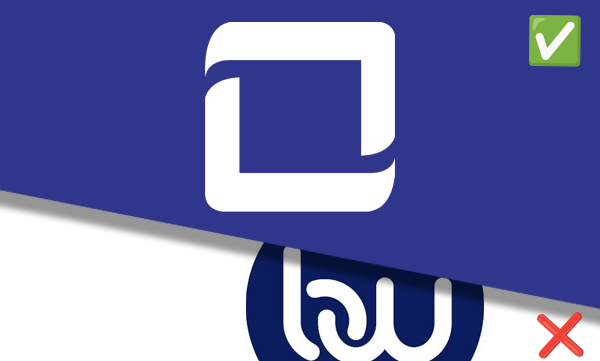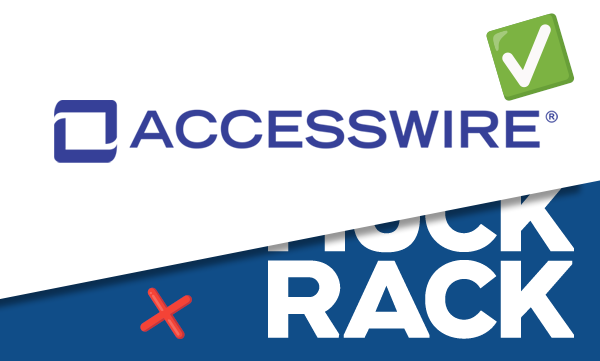Leveraging Public Relations in an Economic Downturn
Lately it’s been difficult to watch or read any news story about the economy that doesn’t contain terms like “recession,” “economic downturn,” “inflation,” or other similarly negative words to describe current global trends.
It is understandable for today’s business leaders to lean toward pulling back on spending, as a result of so much negative forecasting.
There is one opportunity for companies, though, that can stave off heavy damage caused by any level of a recession which could negatively affect a business: Increased public relations communications and activities.
This article will explain how to leverage PR during an economic downturn and stay focused on growing your business.
How We Got Here
Well, if the party’s over, it sure was good while it lasted.
“The party,” of course, refers to the years between 2009 and 2020, where the majority of the world enjoyed record-setting economic growth.
“When President Trump took office in January 2017, he inherited an economy in its 91st month of economic expansion following the end of the Great Recession in June 2009. That expansion continued into 2020, becoming the longest on record but peaked at 128 months in February 2020,” according to the non-profit Center of Budget and Policy Priorities (CBPP).
It is not coincidental that February 2020 was right about the time a new virus strain made its debut on the global stage.
“The onset of COVID-19 produced a sharp contraction in economic activity in March 2020, resulting in a decline in real GDP of 5.1 percent at an annual rate in the year’s first quarter and 31.2 percent in the second quarter. Because GDP was so much lower in the second quarter than it was at the end of 2019, the dollar amount of the 33.8 annualized growth in the third quarter was much smaller than the dollar amount of the second-quarter drop. Growth slowed to a 4.5 percent annual rate in the fourth quarter of 2020,” the CBPP noted.
Without taking too deep a dive into global micro- and- macroeconomics, the above timeline brings us to the precarious situation in which we find ourselves today (the current war in Europe and the volatility of the Chinese markets notwithstanding).
Now, all of us in the business world has to do is…what?
For starters, we need to plan, which brings us back to the question of “…what?”
Because tomorrow’s economic outlook is about as murky as a cup of hot chocolate with marshmallows, the answer to “…what?” is surprisingly simple.
Plan and adjust the one thing your company has control over: Your public relations strategy.
Reasons For Concentrating On PR
Right now it is difficult, if not downright impossible, to find an economic prognosticator who does not expect an economic downturn in the near-term. Already, business leaders in all industries around the world are trying to figure out how to ride out a recession. Cost-cutting measures will not be unexpected when the economy continues on its southward trend.
One big mistake that business owners and C-Level executives should avoid at all costs is making cuts to their company’s public relations strategy. A strong PR strategy is, and will continue to be, essential during a contracting and slowing economy. Why?
Because PR is the least-costly and most effective way to keep companies top-of-mind when it comes to communicating with their target audiences. Slowing spending in advertising is encouraged, and with good reason. Continuing to support activities that cost an overwhelming amount of cash, as advertising invariably does, can put a company in financial jeopardy.
Marketing efforts often need to be cut back, too…but perhaps not as drastically as advertising cuts. The trick is to align your marketing efforts with your PR strategy, so that the overall messaging is consistent and unified.
Companies who curtail all communications strategies run the risk of giving off the impression that they are no longer in business or have been made weaker due to the economic downturn/recession.
Raising your PR activities and relying heavily on public relations during difficult economic times will allow you to show your audiences that your company is doing business as usual. That’s an especially important message that your stakeholders, stockholders, investors, and employees need to hear.
How Public Relations Helps During Downturns
Because economic downturns are difficult to gage in terms of how long or how deep they will be, companies that adhere to a proactive PR strategy stand a much better chance of getting through the tough times than businesses who stop communicating completely.
The goal is to stay afloat during a recession, which calls for proactive measures, and there’s no time like the present to learn how to make the most of a negative situation. Let’s look at how upping your PR game during an economic slowdown can make a positive difference.
1. PR communications fosters confidence.
Those who remember The Great Recession of 2009 can attest that media outlets will fill their daily news broadcasts, newspapers, magazines, websites, and all other platforms with stories about layoffs, closing locations, and companies filing for bankruptcy.
Such a constant stream of bad news takes a toll on people, regardless of where and how they live - including your target audiences.
Using unified messaging can build or strengthen your relationships with your target audiences. Because some of your audience segments are customers or consumers, they might have difficulty doing business with you during a downturn, but chances are good that they start or resume buying what your business provides when the economy begins to recover.
2. Break the silence when your competitors stop communicating.
Telling your company’s story while other businesses go quiet – and some WILL go quiet – gives you a critical advantage and an excellent opportunity to solidify your business’s standing within your industry.
One tried-and-true way to make deep connections with your target audiences is by creating emotion-based messaging. Presenting feel-good stories is the best way to provide a reason for convincing your audiences that your company is worth remembering.
3. Tell your stories in new ways, and in new places.
Getting creative about where your stories appear is as important as the stories themselves. Economic downturns are a great time to try some different ideas.
For instance, if your business doesn’t spend much time within the local community, this is an opportunity that can work in your company’s favor. Participate in local events and fundraisers, or better yet, join the events via sponsorships. Keeping your company’s logo visible and accessible can go a long way with your neighbors.
Another idea is to create something new. If your company has never engaged in podcasts, why not try one? Webinars about trending topics are also a great way to get your brand out there.
Don’t forget to make sure your audience is aware of your Diversity, Equity, and Inclusion (DEI) efforts, or your business’s Environmental, Social, and Governance (ESG) and Corporate Social Responsibility (CSR) policies. These stories matter in all kinds of economies.
4. Be as active as possible online.
It’s a virtual guarantee that people in every target audience you have spends a lot of time online. For this reason, it makes sense to go to where your people are.
But don’t just go to your audience via digital means… engage with them. If your company’s website has a blog, keep writing on it – and share each blog post to your social media accounts. Speaking of social media, you can also engage by posting relevant topics, and ask your followers for their thoughts… and always encourage your social media audience to share your posts with their audiences.
If you don’t send your business contacts or customers a monthly or quarterly e-newsletter, you should. You can provide updates on what’s going on within your organization, provide links to your blog posts, and even offer discounts.
Make sure your online activities are continuous. Create a weekly schedule ahead of time, to help you stay on track. Engaging with your target audiences on a regular basis will create a more meaningful relationship than if you only engage sporadically.
5. Ask your target audiences for their feedback.
The one thing most people enjoy doing is talking about themselves. Asking your audiences how they feel about certain topics, even when they don’t necessarily pertain to your business, will almost certainly get a response. You will also learn things about your target audiences that you probably didn’t know before.
Obviously, you should probably stay away from incendiary topics, such as politics and religion, but that’s easy enough; there are plenty of other topics out there for you to cover.
Ask your audience what they’re doing during the economically challenging times. How are they saving money? What are the products or services they can’t do without? Ask them to share their best advice on day-to-day activities that are beneficial to them.
You can even create contests in which your target audience members can participate. Promoting these contests on your website, social media accounts, and e-newsletters will help you keep the conversation going.
There’s even an opportunity to ask them about your company’s products and/or services – what they like AND dislike, and what they wish you could offer that isn’t currently available. You can also create surveys to find out what your audience is doing and thinking.
Understanding your target audiences’ opinions and ideas will help you in incalculable ways, both in the present-day, and in the future.
6. Boilerplate Information
As most PR professionals know, writing press releases is something your company should be doing on a regular basis, regardless of the economic situation. Compared to the many high costs of some marketing activities and advertisements, press release distribution can be a bargain, and an incredibly useful way to keep your brand in front of key journalists and media outlets.
Your company’s public relations specialist should keep the topics positive and uplifting. After all, there will be plenty of stories containing bad news during a recession, so positive stories have a better chance of getting noticed than just another press release about topics like downsizing and bad earnings reports.
Putting Recession PR Into Perspective
Public relations can be your company’s go-to method of communications during any level of economic downturn. Cutting advertising and high-dollar marketing activities makes sense during a recession…pulling the plug on your PR strategy is a bad idea.
Being in charge of your company’s narrative is a big deal. Taking advantage of such an opportunity can make your business stronger than it was prior to the economic downturn.
Marketing and advertising trends can come and go over time, but your PR strategy will always be the most important communications tool you have at your disposal. There won’t be a time when public relations should be tossed aside, and given the fact that PR is affordable makes it all the more critical during hard financial times.
Where To Start?
An effective public relations strategy should be built to last, so that your company can thrive during the times when other companies falter.
Making your PR strategy a priority just might help your company come through a recession in one piece; neglecting your public relations activities can be disastrous. Don’t wait until it’s too late – jumpstart your efforts by creating a schedule for your future press release distributions.
ACCESSWIRE can help you keep your brand in front of the key people who need to hear from you the most. Get started by scheduling a demo of the ACCESSWIRE platform or request more information about our products and services by clicking here!
Similar Blog Posts



PRODUCTS
ACCESSWIRE | All Rights Reserved

